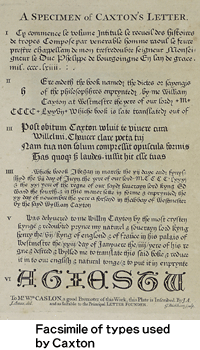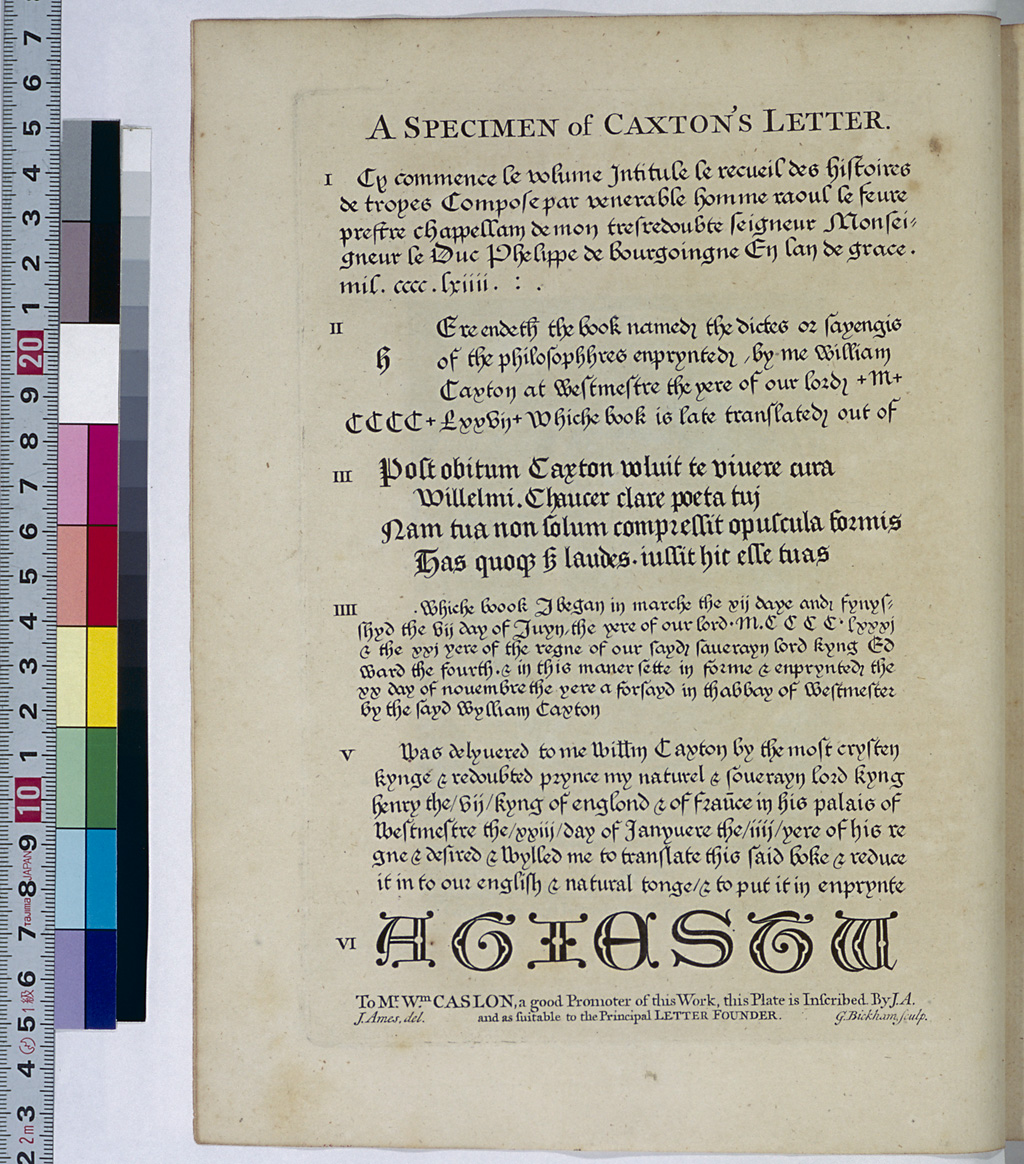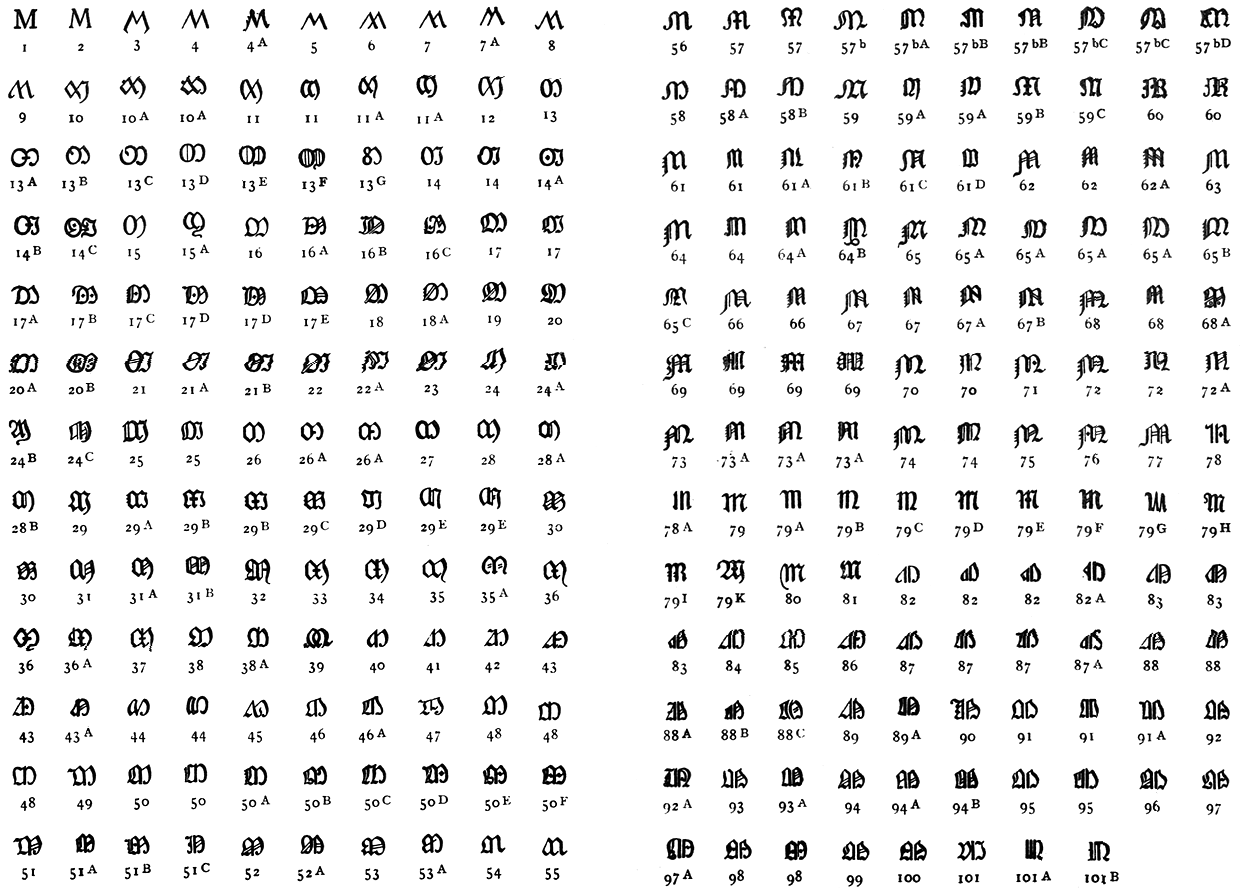Column
Type Classification Systems
William Caxton, who brought the art of printing to England, used ten different type founts to print 105 titles of incunabula in Bruges and Westminster. Caxton's name is printed in 42 of the titles, and the year of printing in only 19 of them. William Blades (1824-90), a British bibliographer, made an exhaustive study of the founts that Caxton used and managed to identify unnamed works of Caxton's and their printing years.
Henry Bradshaw (1831-86), a Cambridge University librarian, first recognized the validity of this methodology. He used facsimiles of the type fonts created by J.W. Holtrop (1806-70), a librarian of the Royal Library at The Hague, to classify incunabula in a manner similar to that used in natural history. He wrote about his methodology: "In fact, each press must be looked upon as a genus, and each book as a species, and our business is to trace the more or less close connexion of the different members of the family according to the characters which they present to our observation." Robert Proctor (1868-1903) of the British Museum took over Bradshaw's methodology, and in 1903, he completed an index in which he arranged the incunabula owned by the British Museum in the order of the printing year. He also initiated a project to publish facsimiles of type founts, but unfortunately he died in an accident in the Alps before the project was completed. His method of type identification was to measure the height of 20 lines with accuracy down to units of millimeters.
Konrad Haebler (1857-1946), a German scholar, made even more exhaustive efforts to compile a list of types used by each printer. To facilitate distinguishing one type from another, in addition to measuring the height of 20 lines of types, he classified the shapes of the Gothic letter "M" into 101 patterns (258 classes). They were published as Typenrepertorium der Wiegendrucke (1905-24).
In conjunction with this work, facsimiles of type fonts were produced in Germany. During the period from 1907 to 1939, a total of 2,460 sheets of type facsimiles were published. Haebler's list of type fonts distinguished the type of each printer by numbering them in the order of printing. The union catalogue of incunabula, Gesamtkatalog der Wiegendrucke, used Haebler's reference numbers for the entry of type used in each incunabulum.





